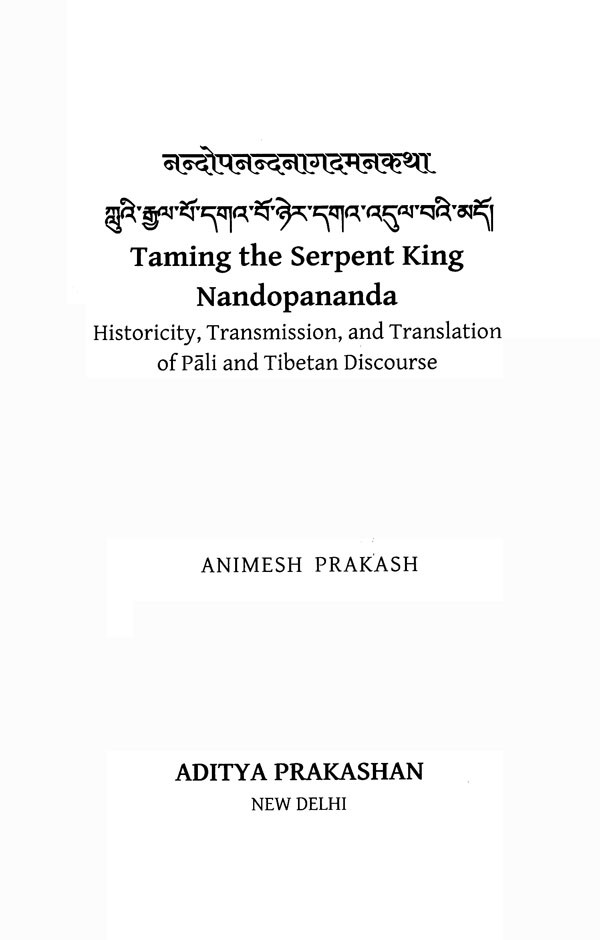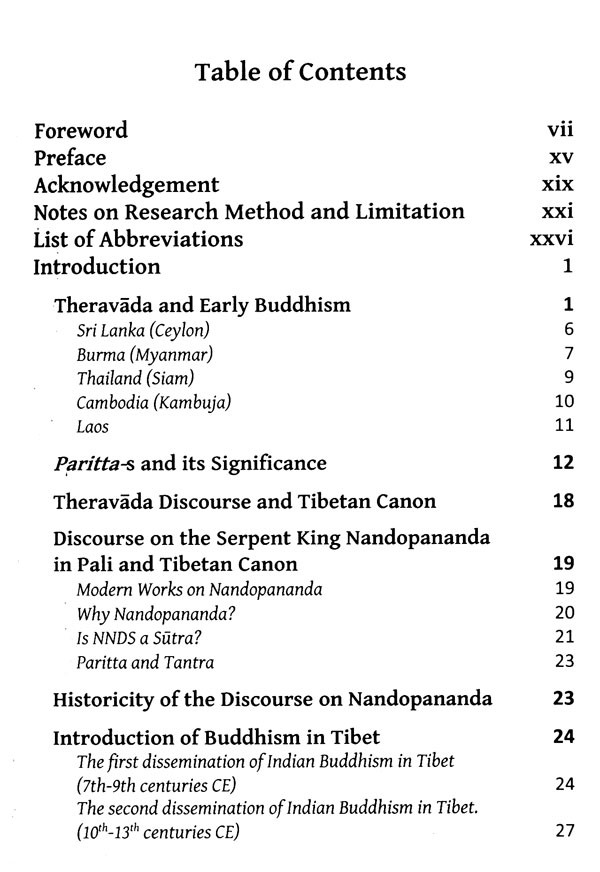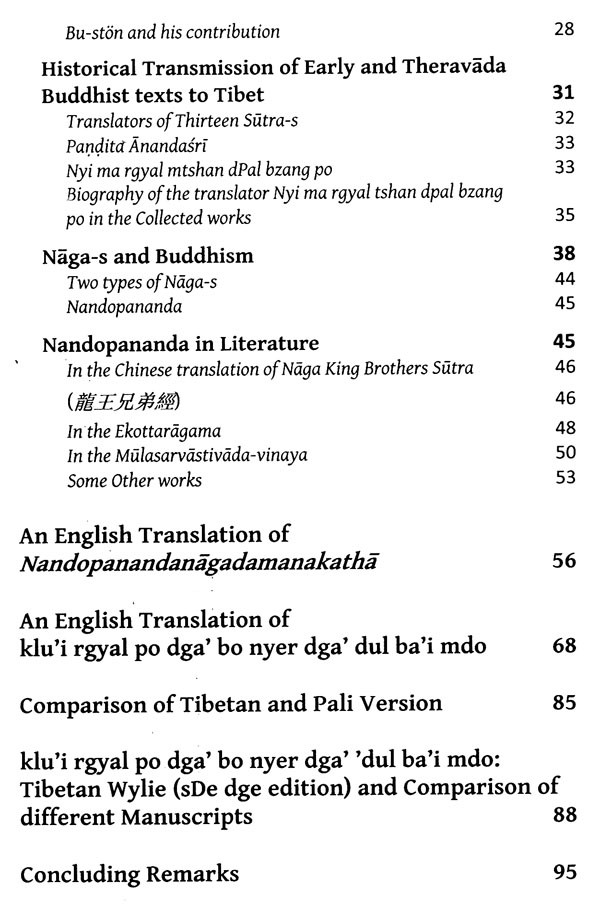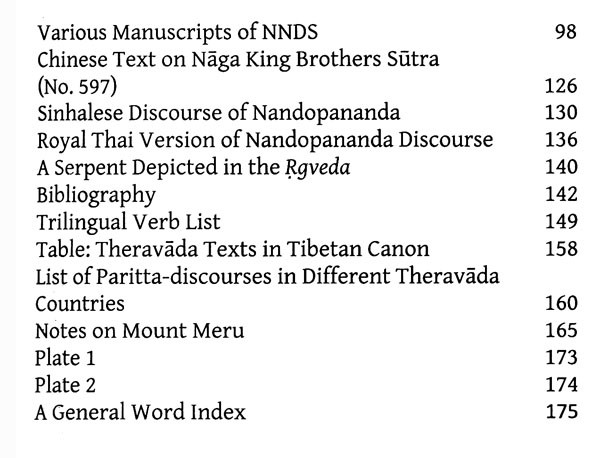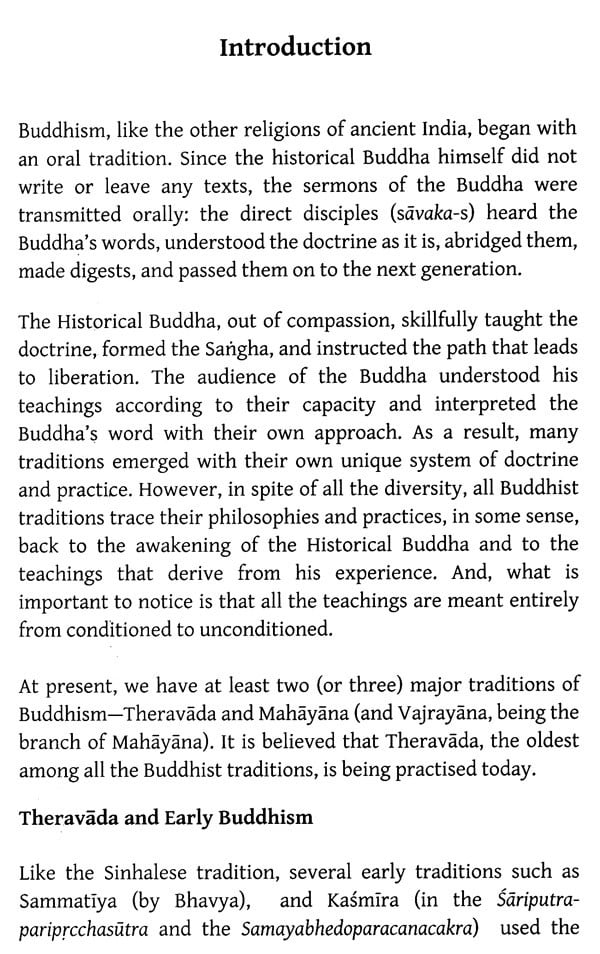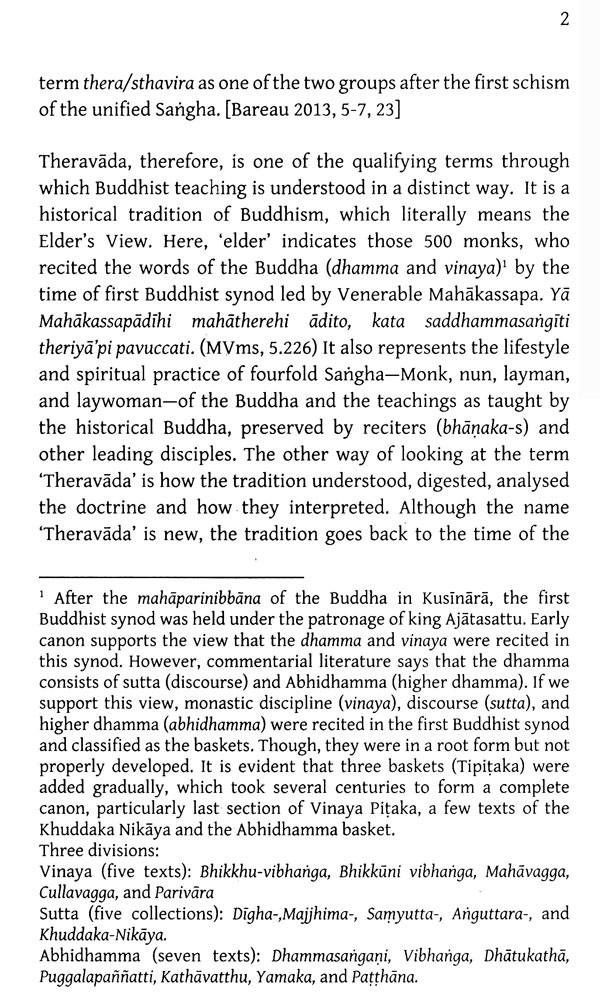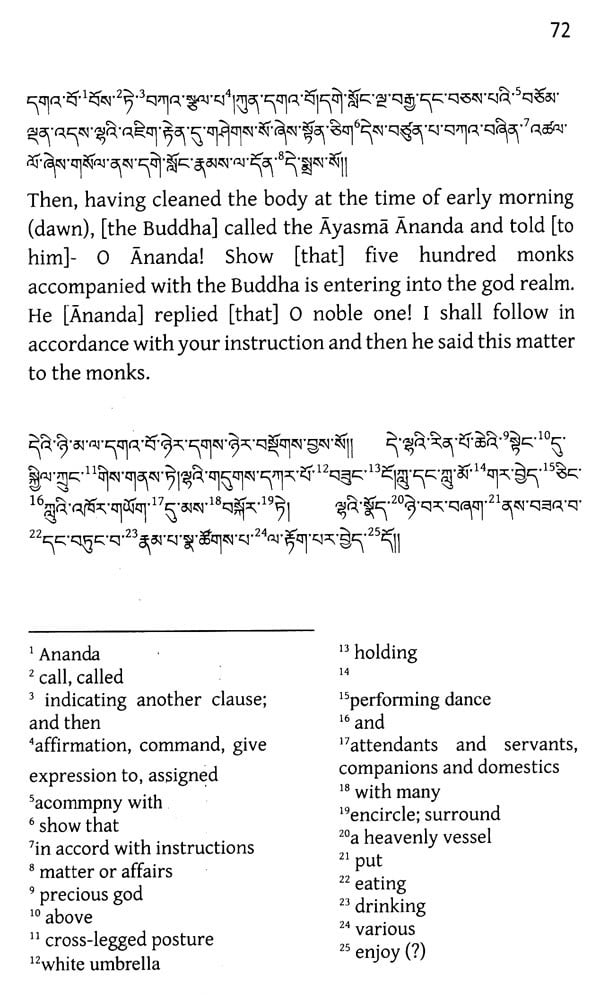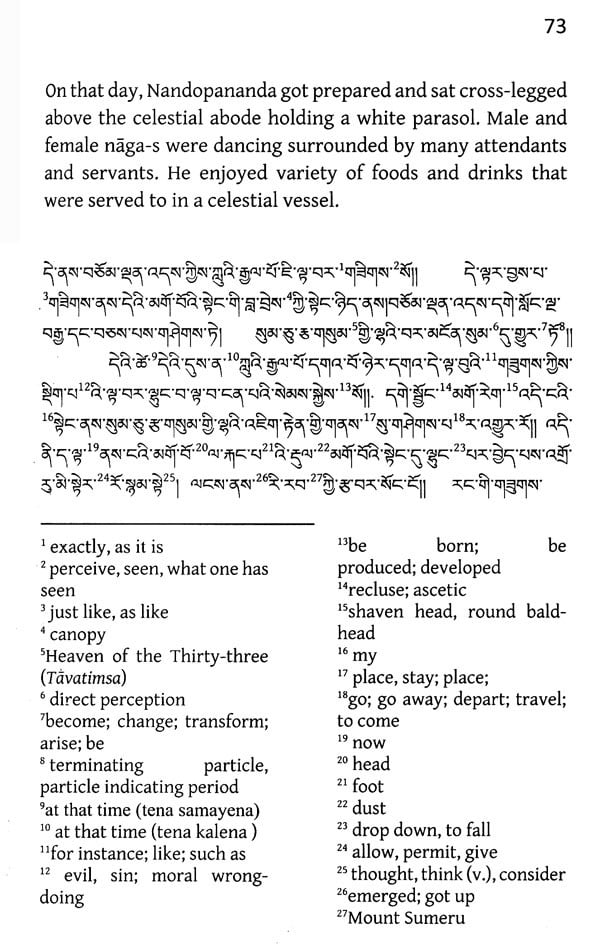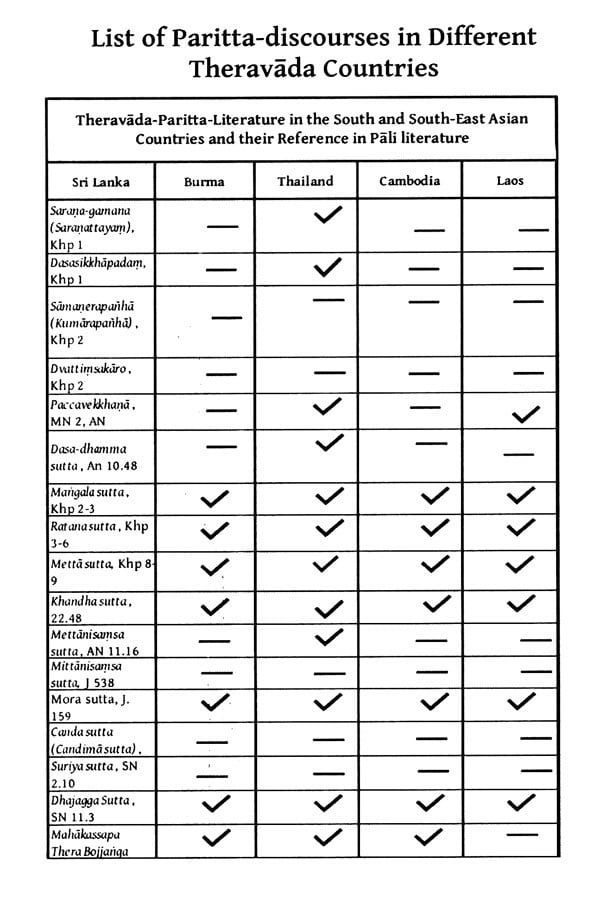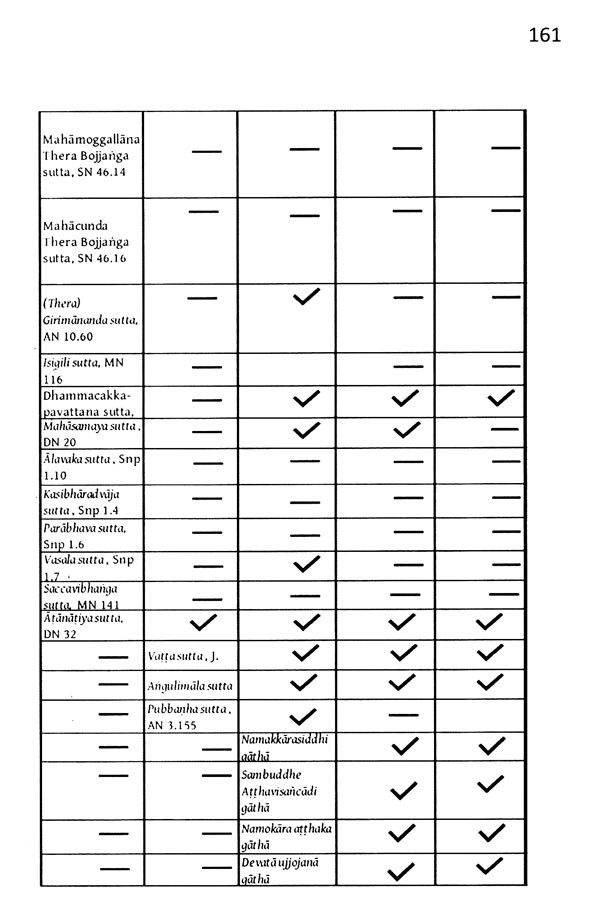
नन्दोपनन्दनागदमनकथा: ཀླུའི་རྒྱལ་པོ་དགའ་བོ་ཉེར་དགའ་འདུལ་བའི་མདོ །- Taming The Serpent King Nandopananda (Historicity Transmission and Translation of Pali and Tibetan Discourse)
Book Specification
| Item Code: | UBB878 |
| Author: | Animesh Prakash |
| Publisher: | ADITYA PRAKASHAN |
| Language: | Various Language |
| Edition: | 2021 |
| ISBN: | 9788195096190 |
| Pages: | 206 |
| Cover: | HARDCOVER |
| Other Details | 9.00 X 6.00 inch |
| Weight | 390 gm |
Book Description
According to the Tibetan MSS' Colophons of Nandopanandanagadamanakatha, it was translated into Tibetan with a title A Discourse on Taming the Serpent King Nandopananda by the great collaborative effort of two scholars of 14th century. Pandita Anandasri and a Tibetan translator Nyi ma rayal mtshan dpal bzang po.
It is very interesting to know its significance that not only Tibetans translated it but also recognised this discourse (katha) as Sutra (5), which is preserved in the Kanjur section of Tibetan canon.
We also find similar stories of King Nandopananda in the Chinese version of the Ekottara-Agama, the Molasarvastivada-Vinaya, and most importantly an independent discourse called Ali E or The Naga King Brothers Sutra, which was translated between 223 and 253 CE by Zhi Qian.
I have good reminiscences that how Animesh Prakash was admitted to the BA (Hons.) in Pali and I had good fortune of teaching him. As a student Animesh endeared himself to all his teachers and students of the department. He was very intelligent and promising. In the department, he was one of those students who studied under my personal guidance and I felt fortunate and proud to have him as a research scholar for Ph.D. course. His subject of research was "Insight (Vipassana) in Theravada Buddhism and Its Application in Psycho-Therapy." As per my suggestion, he got training of Research Methodology under the guidance of band of scholars of Pali & Buddhist Studies at Savitribai Phule Pune University, Pune. He was also trained in the Elementary Course of Tibetan Language under the guidance of Rangjung Yeshe Institute, Kathamandu, Nepal. He was awarded Ph.D. Degree in 2013 and joined as Assistant Professor, Department of Pali, K. J. Somaiya Centre for Buddhist Studies in 2014.
At that time, I had just completed my Post-graduate studies in Pali language and was less aware about the transmission of Pali texts to other Mahayana countries. Having got motivated and inspired by my teacher, I went to study Tibetan language at Rangjung Yeshe Institute (RYI), Kathmandu. Although I couldn't become proficient in Classical Tibetan in just eight-week-summer-intensive program but all I could learn was to communicate basic sentences, and had an opportunity to stay with a Tibetan family, which made me familiar about their culture. I was fortunate enough to have gain nuances of Tibetan language by two of my great teachers, who taught me at RYI namely Dr. Philippe Turenne and Mrs Sonam Dekyi. During the stay at Kathmandu, for the first time, I heard the name of Dr. Peter Skilling as the scholar who had done extensive work on Theravada discourse, which are translated and preserved in Tibetan canon. It was startling and propelled me to explore such a fascinating field of Pali- Tibetan studies, which has been less explored by scholars.
**Contents and Sample Pages**
